Are you a lover of Apothecary Cabinets, or do you call them Card File Chest? Anything with small drawers, even fake ones, will catch my attention.
I decided to attempt an IKEA hack by building a DIY Faux Apothecary Cabinet – (Card file chest) out of this 16-cube storage unit. This will be perfect for storing my gardening supplies.
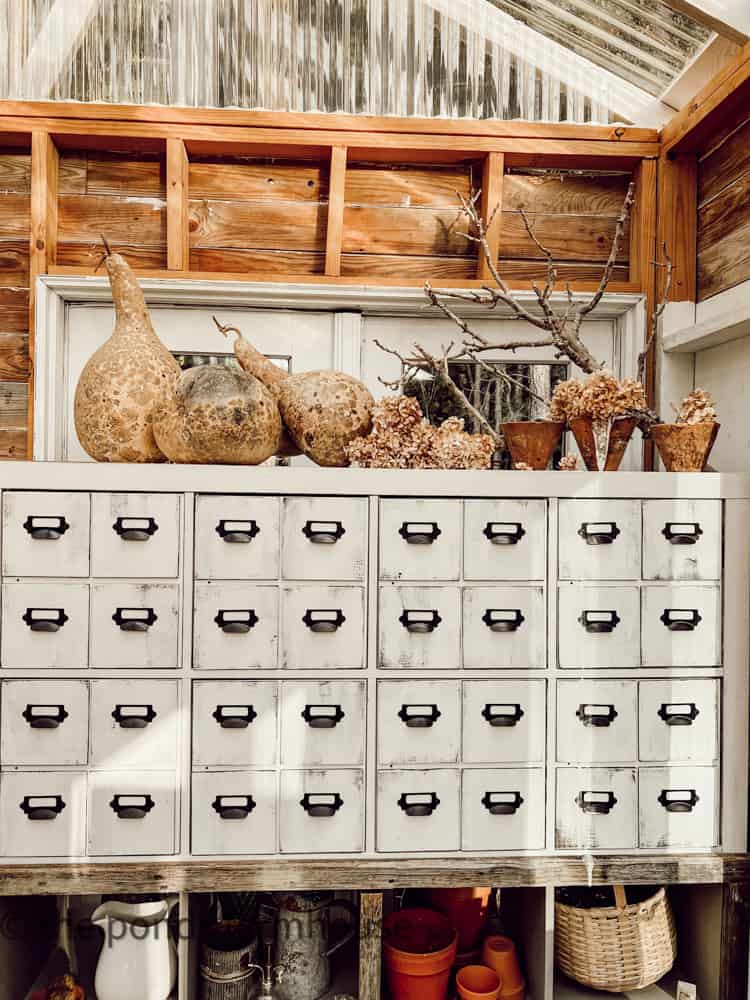
What can you do with a 16-cube IKEA Storage Unit? I will show you how to make a DIY faux apothecary cabinet or Card File Chest out of it.
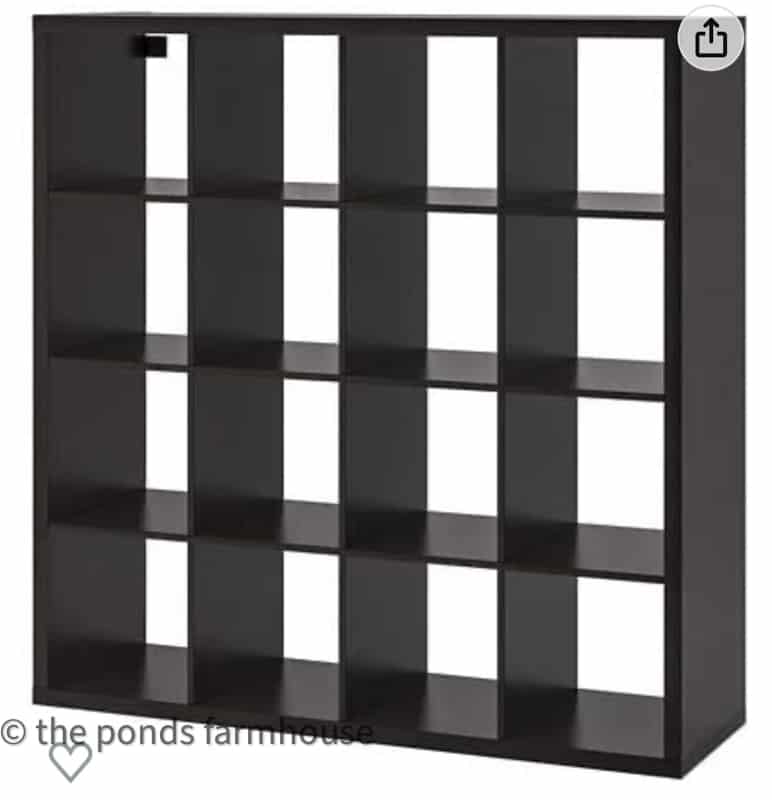
I had previously used this in my home office for storage. When we downsized, I no longer had a space for it. However, I held onto it, waiting for inspiration to hit. We were in the final stages of completing our DIY Greenhouse when an Idea began to form.
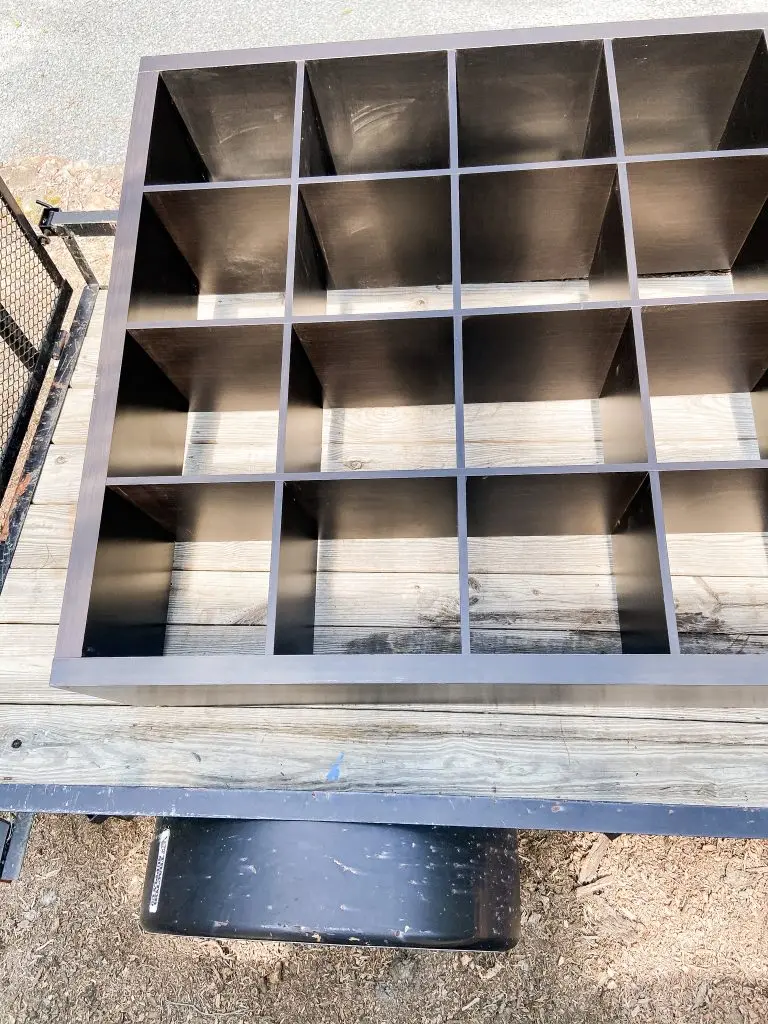
(Posts on The Ponds Farmhouse may contain affiliate links. As an Amazon Associate, I earn from qualifying purchases. See the full disclosure details here.)
Here is the recent Fall View – I can’t wait to share this view for Christmas – Be sure to follow me on Instagram for all the latest.
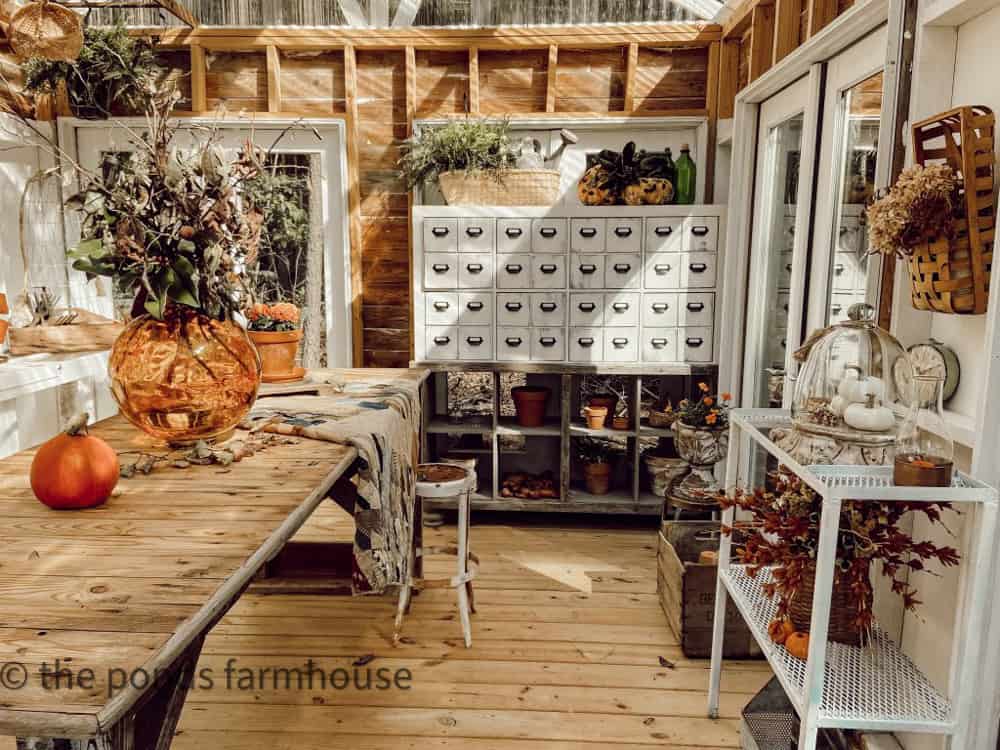
The door inserts we purchased with the unit will be perfect for adding the faux apothecary drawers.
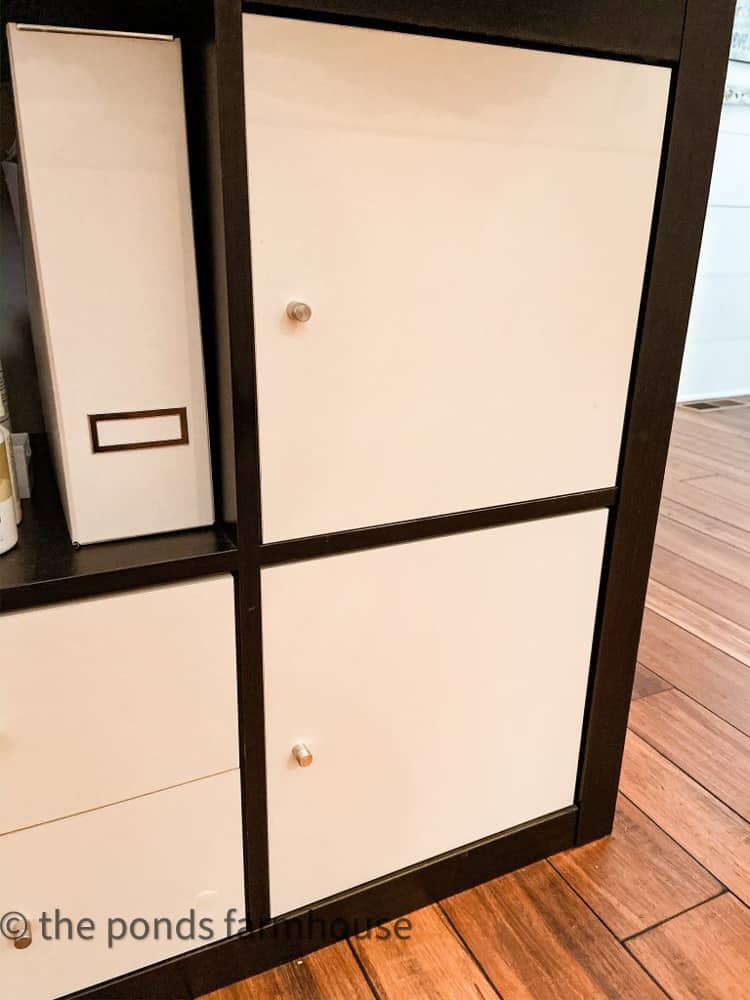
When we purchased the unit from IKEA, we bought 3 door and drawer inserts to hide the stored items. Since 8 door inserts were needed for this project, we needed to purchase an additional five.
Supplies and Tools needed
- IKEA Kallax Cabinet – used
- 8 door insert from IKEA (5 new ones purchased)
- Large Bun Feet
- Leg Mounting Plates
- Two Paint Colors of your choice – Chalk Paint works well on this slick surface. I used a white and a grey shade of chalk paint similar to these colors.
- Wax sealer
- 2 – 2×4 sheets of 1/4 smooth plywood available at most hardware stores.
- 32 – Label Drawer Pulls
- 1′ long wood screws black
- Dark Stain – American Walnut
Tools
- Cordless Drill
- Belt Sander
- Table Saw
- Phillips Head Screw Driver
- Paint Brush
- Sharpie Pen
- One sheet of card stock or heavy paper to make a 6×6 template.
How to make a DIY Faux APOTHECARY CABINET or Card File Chest from an IKEA Hack
First, paint or stain the wooden bun feet to match the IKEA cabinet.
Adding the feet is an optional step. If you are happy with the cabinet’s dimensions, you can skip this step.
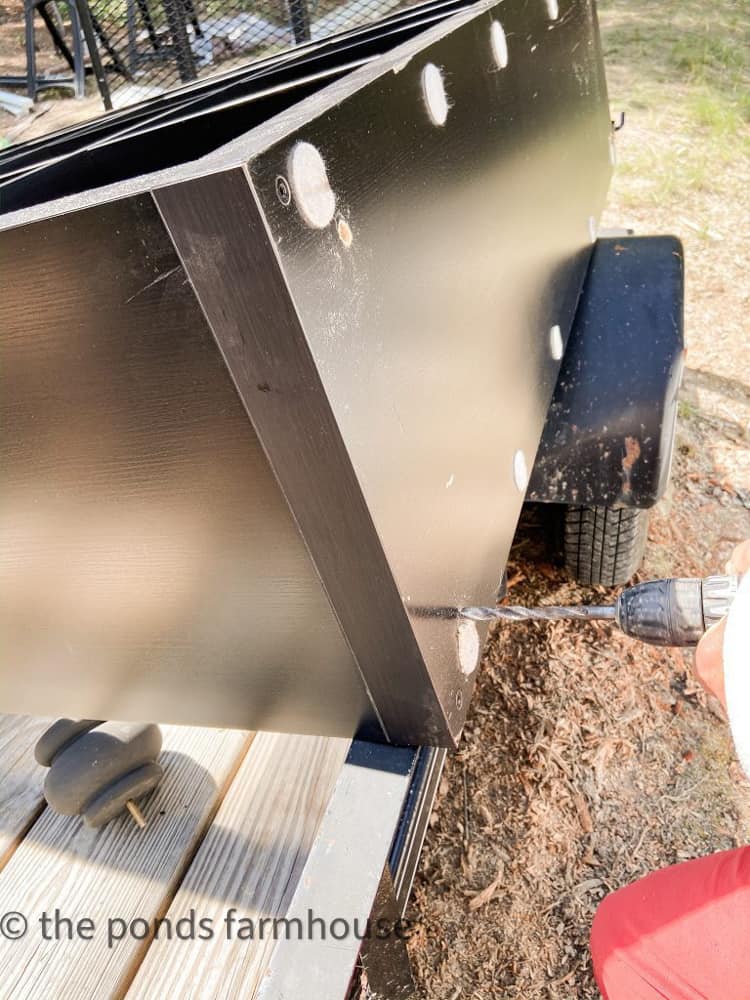
It is necessary to drill a hole the size of the screw attached to the wooden foot. You will also need leg mounting plates to attach the feet. Center the mounting plates over the drilled hole and secure them with included screws. Then screw the wooden feet into place.
Paint the IKEA Cabinet your desired colors.
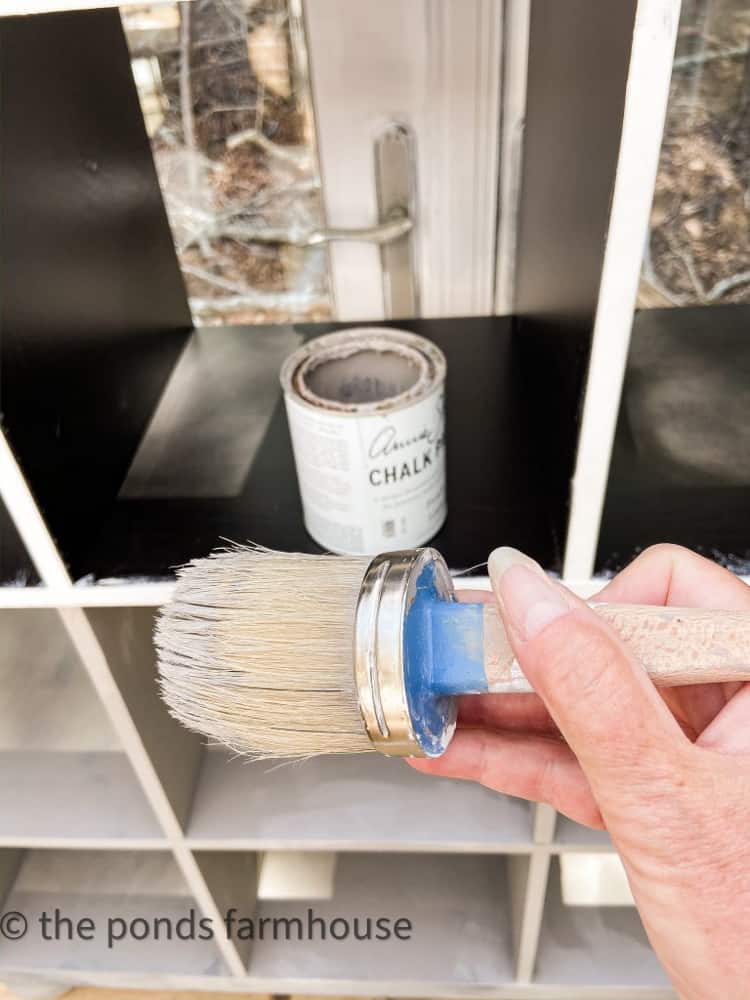
Next, it’s time to paint if you want to change the color of your cabinet.
At this point, I have decided to make the existing cabinet look like two separate pieces—a larger piece at the bottom and the apothecary cabinet at the top.
I painted the bottom half one color and the top half a contrasting color.
I used French Linen for the bottom half and Old White for the top half. These Annie Sloan Chalk paints were some I had on hand, making the project more cost-effective. This tutorial teaches you how to use chalk paint.
The existing cabinet’s surface is slick, and chalk paint sticks well to it. I listed a Rust-oleum brand that is easy to find above.
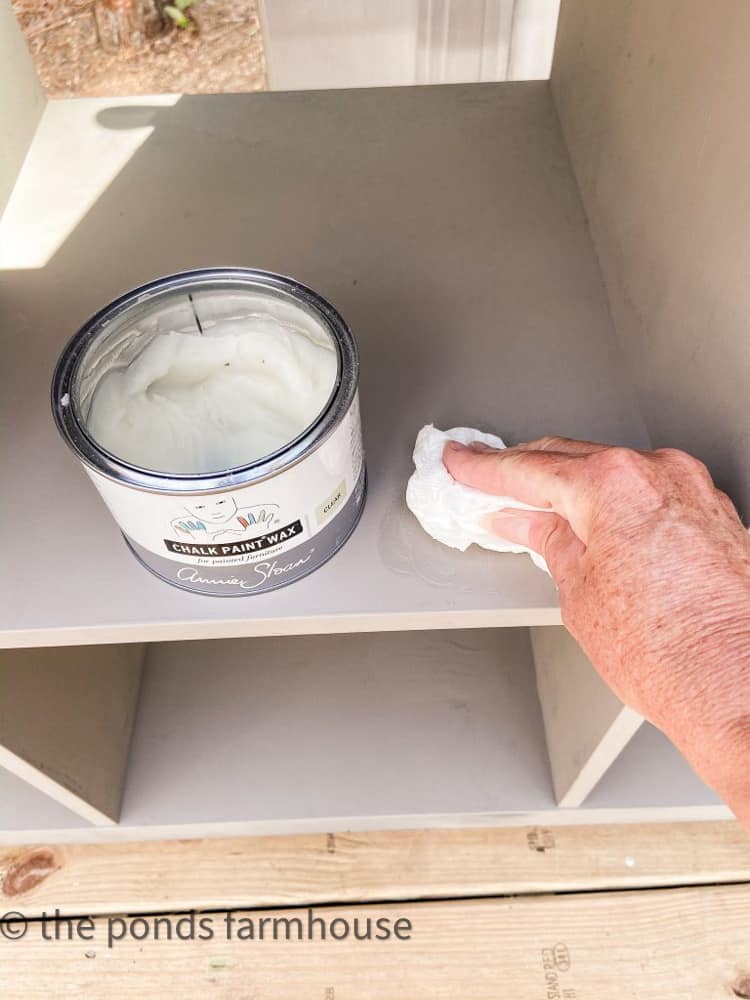
Next, apply wax to seal the paint. Here is what the cabinet looks like at this point.
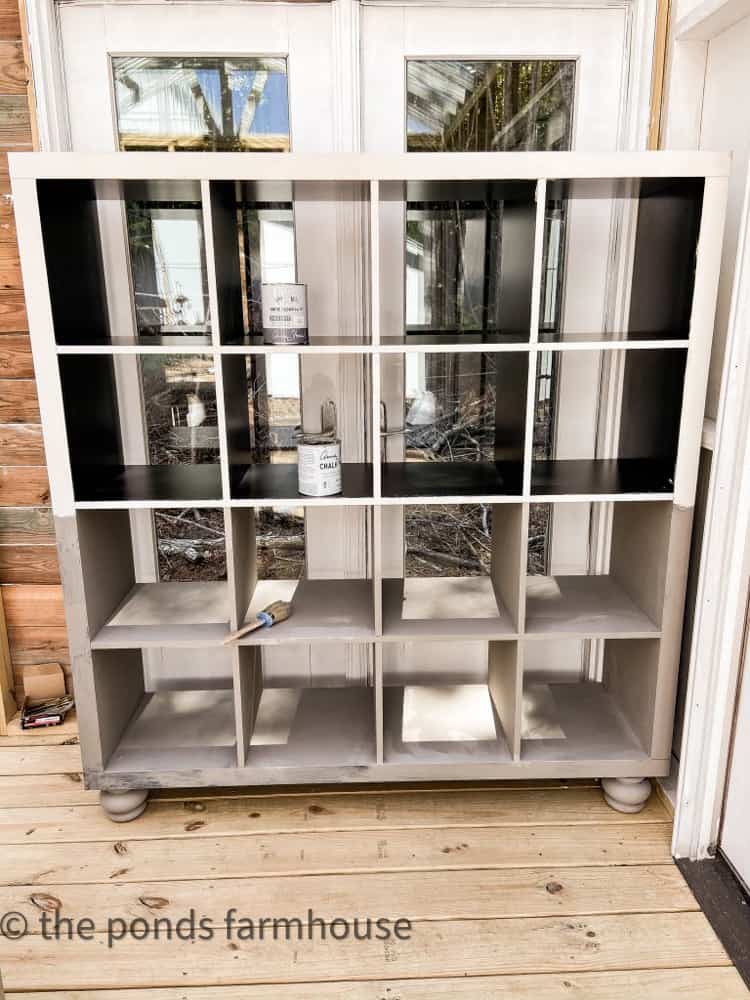
Add Reclaimed Wood
To make the cabinet look like two separate pieces, you will want to add some additional wood and trim to the bottom half of the cabinet.
I used some weathered reclaimed wood that we had left over from another project. You can purchase new boards or trim work from the hardware store.
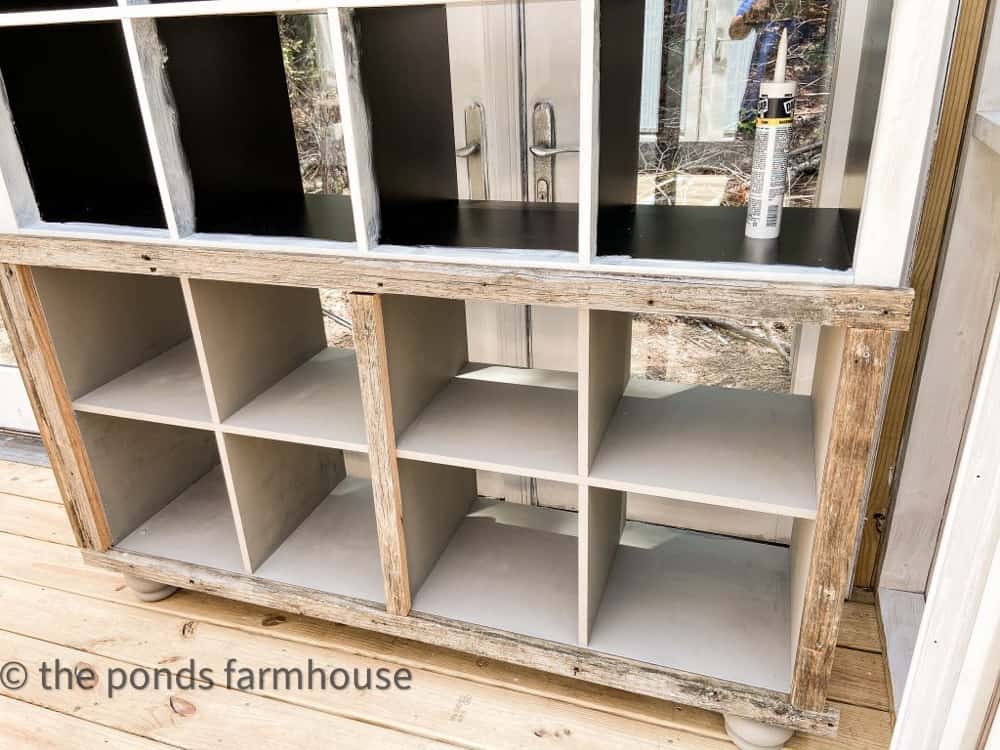
Now, add full-size boards to the side panels. We striped the boards using a table saw to create the trim pieces. A single board was attached to the cabinet’s center to divide the piece.
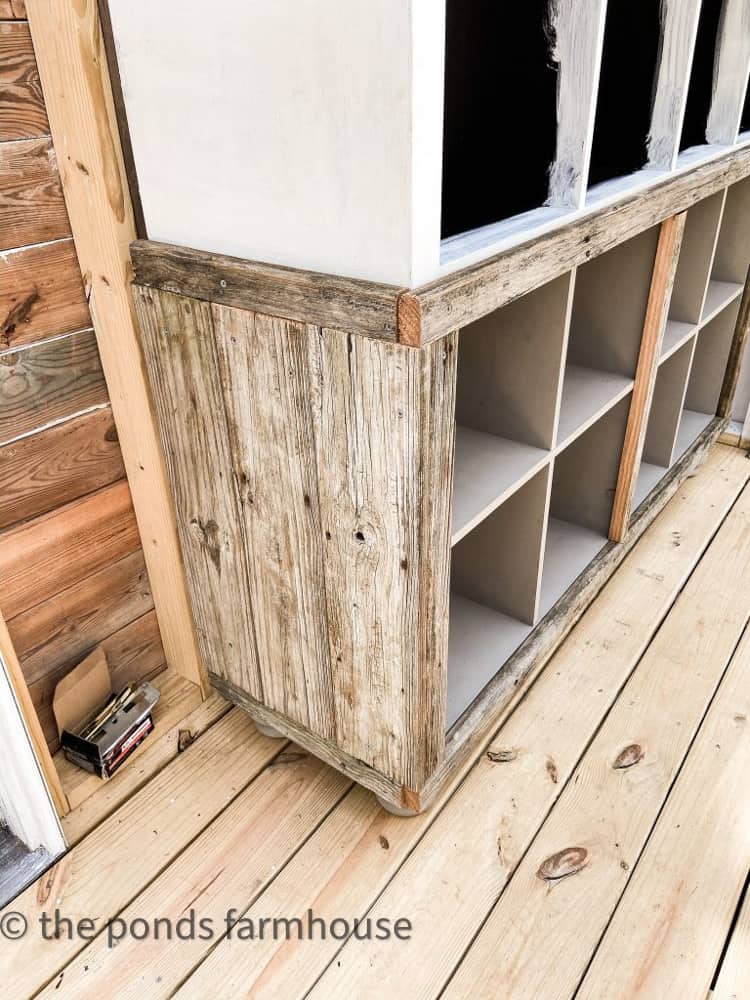
Now, the bottom appears to be larger than the top. The IKEA Hack is coming together. The reclaimed wood gives the bottom half a primitive, rustic feel.
Building Small Wood Drawers for the Upper Half of the Cabinet
Now, it’s time to work on the top half of the cabinet. This is where the Apothecary Cabinet/Card File comes into play.
Because we already have some door inserts for this piece, we purchased more to create our drawers.
By purchasing two 2X4 sheets of 1/4″ plywood, you will have enough wood to create the illusion of small drawers. The 8 door fronts are 13×13, so begin by cutting 32 – 6×6 squares. We used a table saw to strip the plywood into the appropriate size.
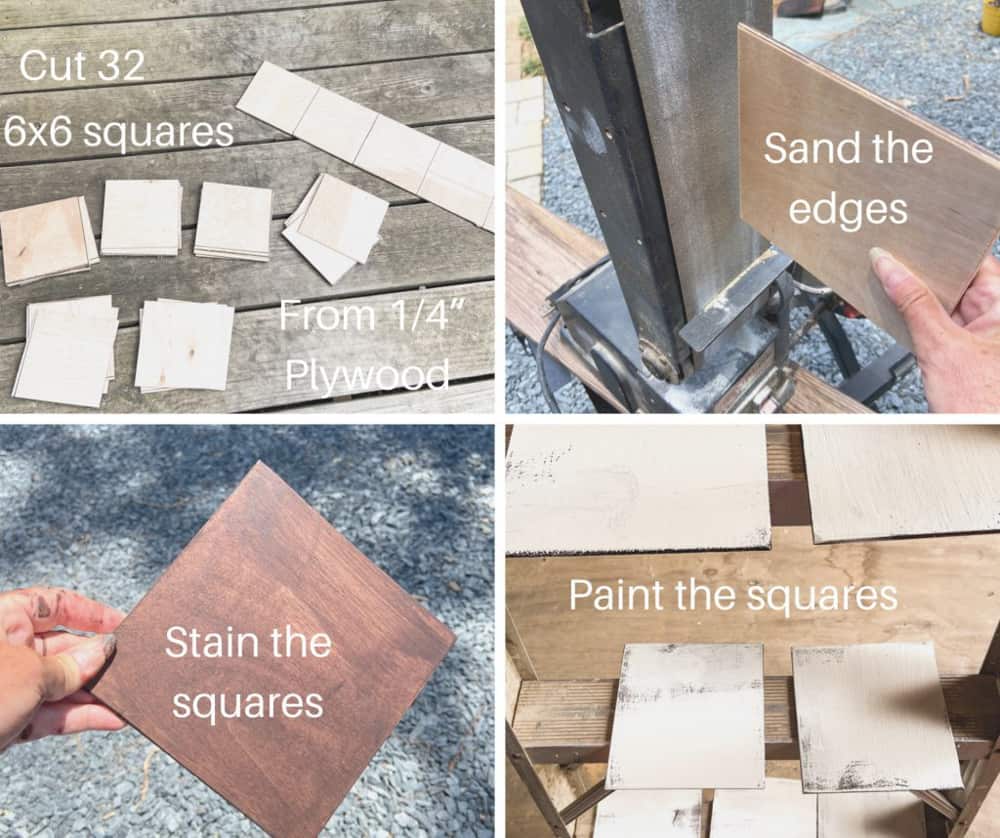
Then use a belt sander to smooth the edges. Although it is more time-consuming, you can use a sanding block or sandpaper if you don’t have a belt sander.
In order to achieve a distressed look for the Apothecary Cabinet Drawers, you will want to stain each square with a dark gel stain. These are stained with Old Masters American Walnut Stain.
Once the stain has dried, paint each square to match the top half of your cabinet. I only used one coat of paint to allow the stain to show through.
Create a template for the Apothecary Drawers.
This is an important step and will save you time and heartache. It is tough to get the hardware installed evenly without a template.
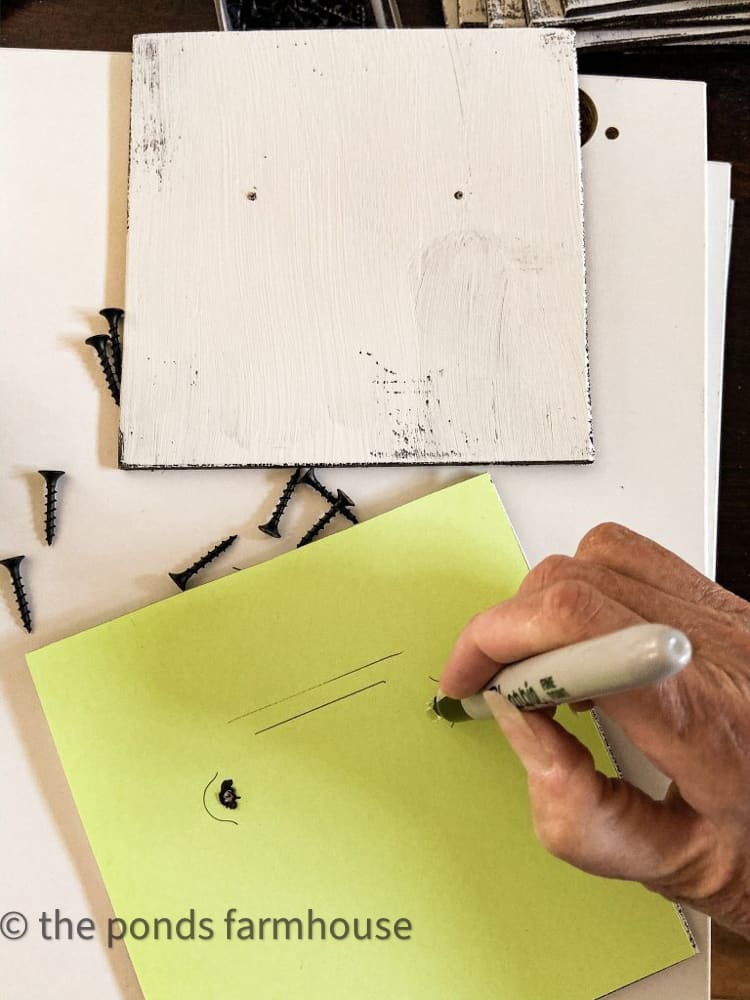
Next, create a template for your drawer fronts. Decide where you want your hardware placement and punch a hole in the paper template to mark for your pilot holes. This will ensure that your hardware is placed in the exact same spot on each board.
Attach Hardware and drawer fronts to door inserts.
Now, you will want to drill two pilot holes in each drawer front with a small drill bit.
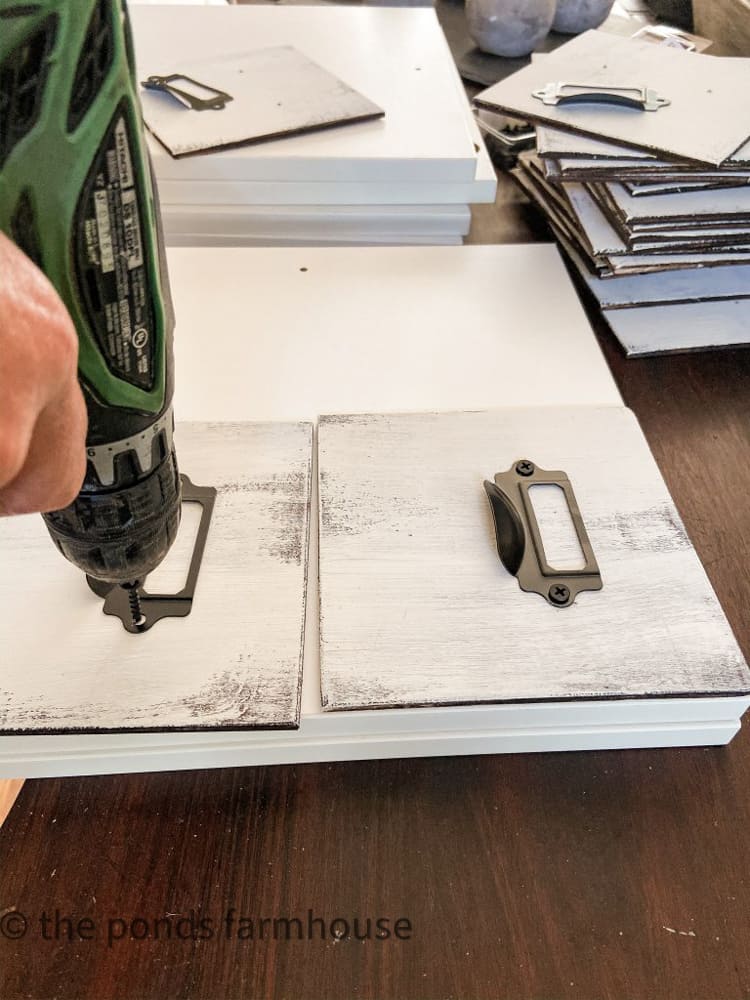
Please ensure you space the wooden drawer fronts evenly on the door insert. Use wood screws 1 inch long to attach your hardware and your wooden drawer fronts, securing them firmly to the door insert.
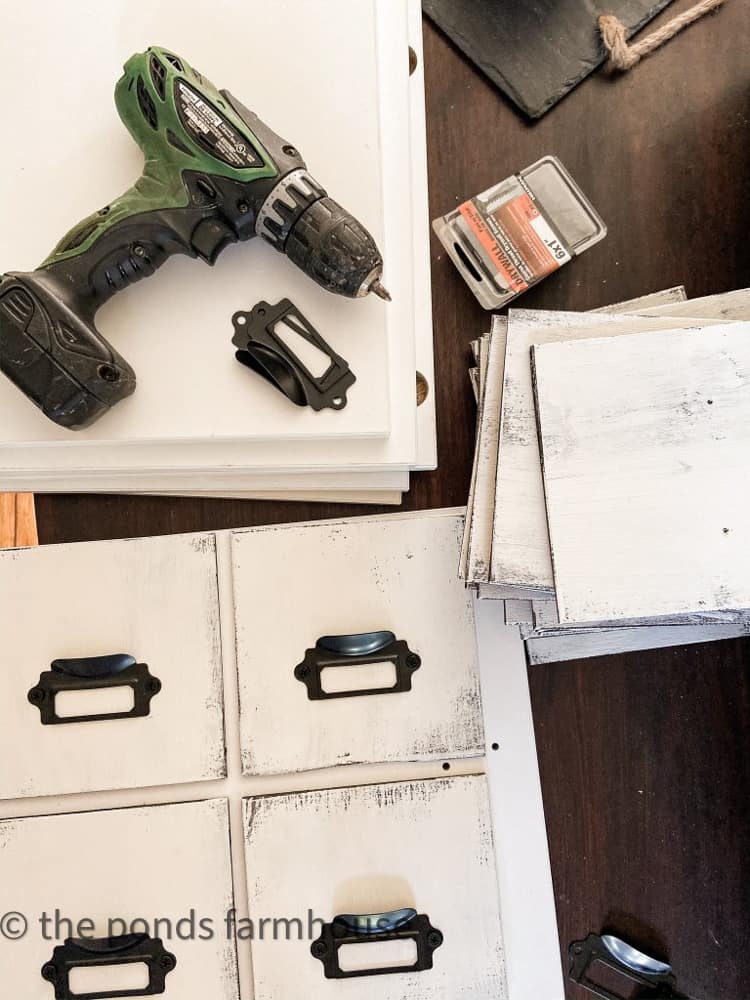
I used label holder pulls for my hardware. The screw goes in from the front on these label holders and pulls from D. Lawless Hardware, making them perfect for this project. The same pulls are used on Our Farmhouse Island and the Re-purposed Silverware Box.
Install your Apothecary Doors
Finally, you are ready to install the door fronts according to the IKEA instructions, and your Apothecary Cabinet will be finished. I plan to add labels to the drawer pulls once I add potting supplies to the cabinet.
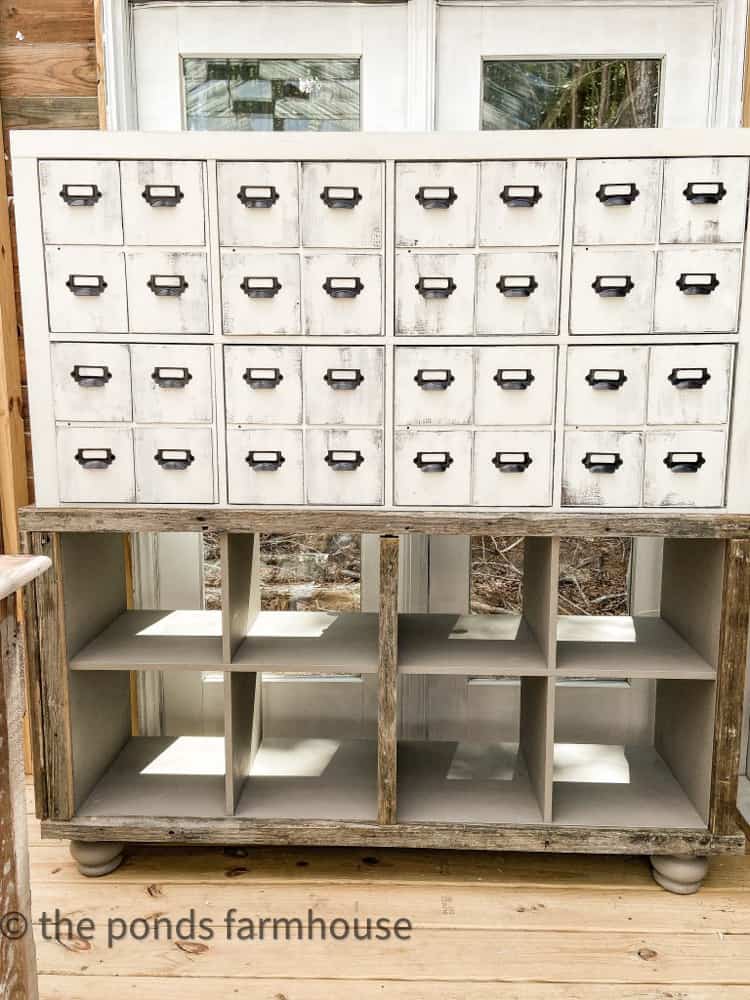
The upper Apothecary Cabinet Section appears to be sitting on top of a more primitive vintage piece. See how I made a potting table and a solar chandelier for the Greenhouse.
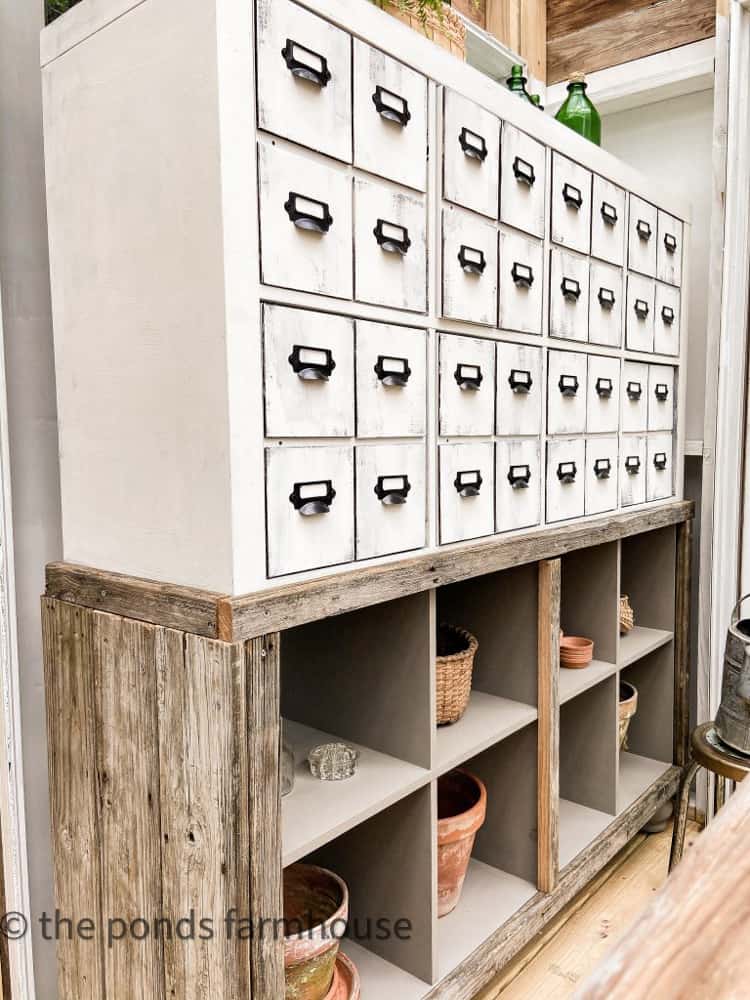
Love IKEA Hacks
I hope you like this IKEA Hack. It’s exactly how I envisioned the project, and I am thrilled with the results. This will provide much-needed storage for the greenhouse.
Check out this blog post, where I share all the photos and details about how we built this greenhouse.
More Favorite DIY Projects
- DIY Apothecary Cabinet IKEA HACK
- Over The Table Rod Stand Tutorial
- How to Make A DIY Potting Table from Old Windows
- Copper Hanging Pot Rack
- DIY Copper Spice Rack
- Nautical Rope Mirror Tutorial
- Easy Rustic Ladder Tutorial
- Distressed Decoupage Lamp Makeover
- Easy Thrifted Lamp DIY – Pottery Barn Hack
- Pottery Barn Leaf Napkin Ring Hack
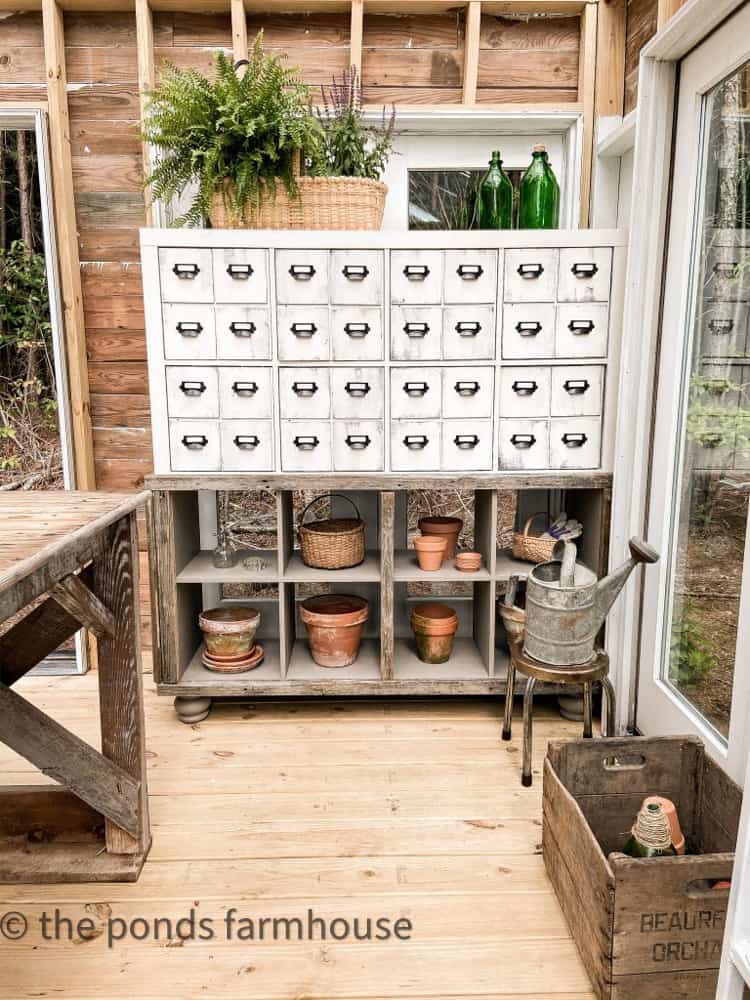
Thanks so much for stopping by. I look forward to sharing my next adventure with you.

Pin It To Remember It
Did you find some great ideas you’d like to save for future reference? To save, hover over the images and pin to your favorite Pinterest Boards when you see the PIN button in the upper left-hand corner.
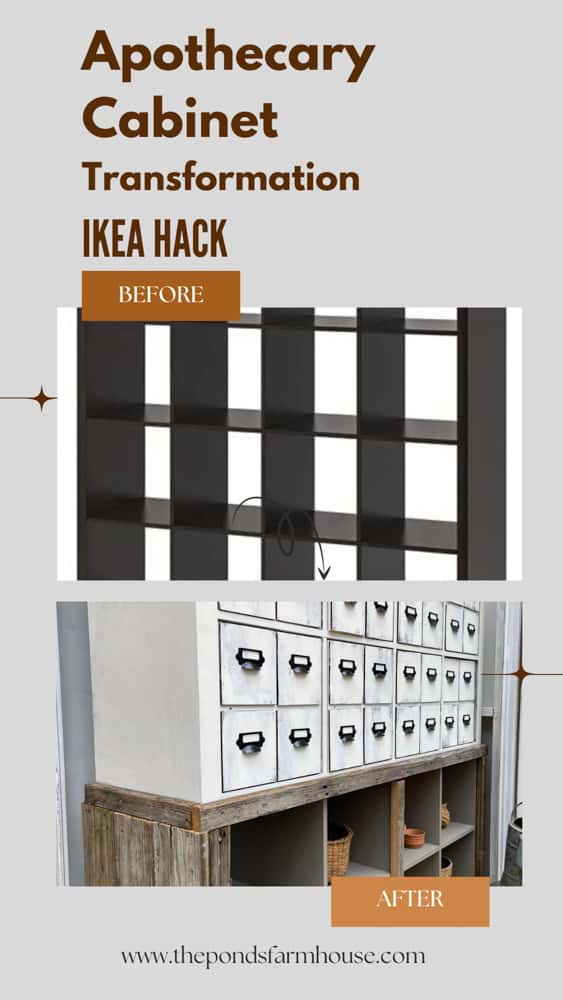
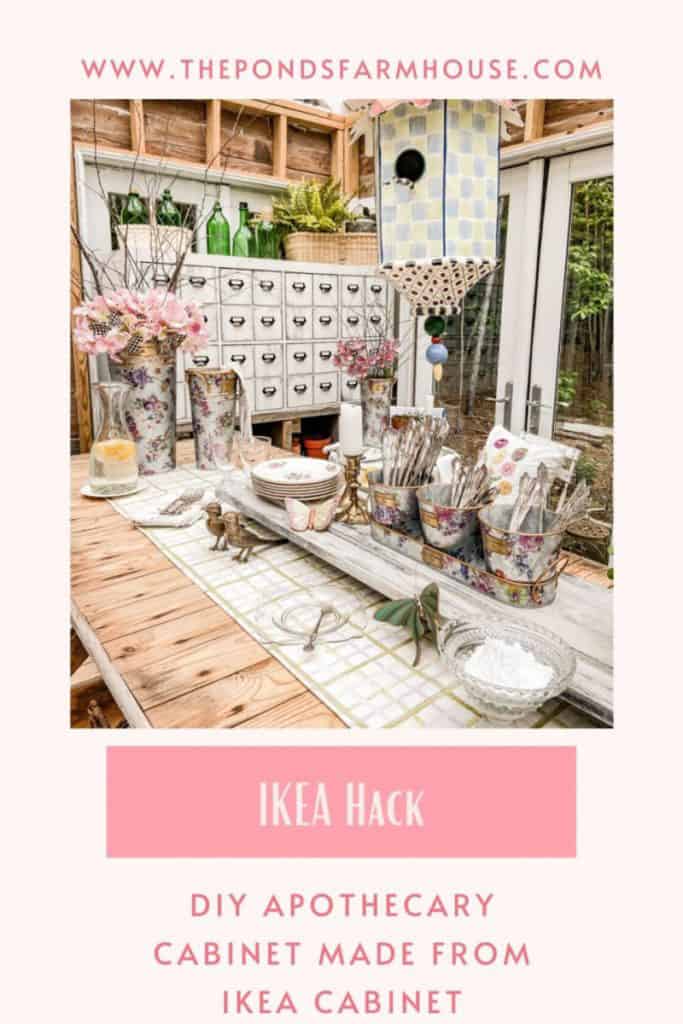
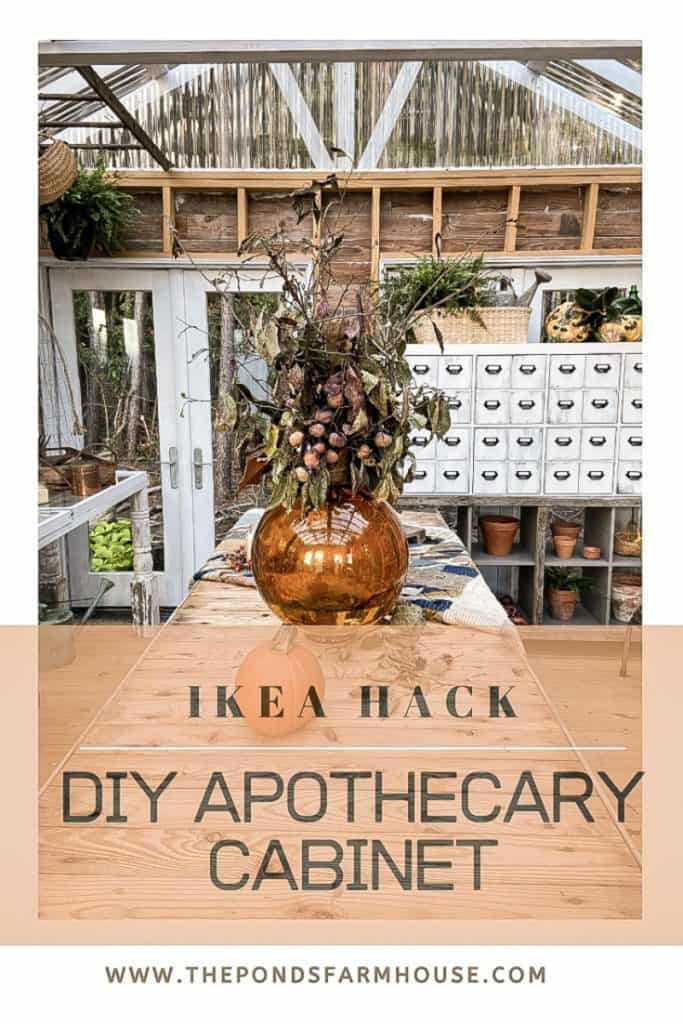


stacy
Friday 21st of June 2024
i love this one! I want to do it
Rachel
Saturday 22nd of June 2024
Stacy, Let me know if you make one.
Karins Kottage
Tuesday 19th of December 2023
I LOVE LOVE this IKEA hack! Wow what a transformation! You’ve got my wheels turning! I have two smaller sized IKEA cabinets in my craft room that I could do this to. Great tutorial!
Rachel
Thursday 21st of December 2023
Karin, I'm so glad you like it. Thanks for stopping by.
Kristin
Friday 22nd of September 2023
I really love this and have been looking for something just like this to try. If you don't mind a bit of feedback (please note: I am really still learning how to do these things) as a newbie I would personally really benefit from a few additional details such as the size of the reclaimed wood you used (I understand I can measure the shelving however, as the expert, your advice here can certainly make the difference in these steps, and perhaps an example of what (material etc) you used to make the template etc. I understand these are basics especially to you as you clearly knocked this out of the park but for myself, believe me when I tell you, these can be the little steps where the wheels fall off :)
Thank you for sharing it is so seriously gorgeous! You have a gift for this stuff!
Best,
Kristin
Rachel
Sunday 24th of September 2023
Kristin, Sure each door is 13 inches square and the small panels are created using 1/4 inch smooth plywood. Each square is 6 x 6 inches. As for the template, I used a piece of card stock paper. I hope this is helpful.
Karen
Saturday 11th of February 2023
LOVE!!!! How do the Top doors/drawers open? Thank you!!
Rachel
Sunday 12th of February 2023
Karen, So glad. Thanks so much.
Cheryl Atkinson
Sunday 21st of August 2022
Hi Rachel! This is absolutely amazing! I am so glad i found you because you give me so much inspiration. This was genious!
Rachel
Tuesday 23rd of August 2022
Cheryl, Thank you so much for these kind words of encouragement.